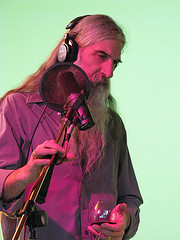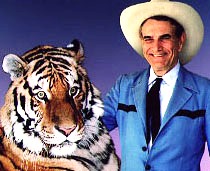| « Bebopping at Midnight | NAMM to Offer Free Webinar on Revised Lacey Act » |
Classic Reverb Stories or “Do You Hear An Echo?"
By Edward Lapple
Reverb is the stuff of legends. It makes you seem bigger than you really are. The truth be told, almost all musicians like the sound of reverb. One trick that every recording engineer knows is, “Verb In The Cans.” What’s that, you ask. No, it’s not an eighty-year-old English teacher taking a potty break. It’s when a vocalist is having a hard time laying down a good track and you need to coax a performance out of them. To make them feel big and powerful, send their voice into the reverb chamber and then route the reverberated signal back to their headphones. Don’t send it to the recording device; we want that signal to be dry (Dry=Without Reverb) so that we can adjust it in the mix. Only the singer gets to hear themselves with reverb, but they always just love it.
Click through for more more more more
What is reverb and why is it such a magic potion? Well, how do we hear? Basically, Bob’s mouth opens and, as he speaks he causes the air around him to move. You might say that Bob is blowing in the wind. This minute movement of air causes your sensitive eardrums to vibrate and your brain translates these vibrations into a flow of information which we understand as sound. If we happen to be in an open field when this occurs, well that’s that. But if there happens to be a hard surface, such as a wall, near us, then Bob’s word vibrate our eardrums, hit the wall and bounce back, there to vibrate our eardrums yet again. Now these air currents are not as strong the second time we hear them but we definitely hear them. How quickly we hear Bob’s repeated words depends on how close we are to the wall. Sound is pretty quick. It moves at around 761 mph, or Mach 1, that magical number that Chuck Yeager broke back in 1947.
“I’m a musician, why do I care about this stuff?” you might ask. Well, because I care about it and this is my column, so sit back and read. Anyway, the math part is almost over, otherwise I’d have to put a quiz at the end of this and I don’t have the time or inclination to grade all of the papers. I’ll let you off the hook by saying that our brains perceive any repeated sound that we hear as reverb, if it occurs in thirty milliseconds or less. If it takes longer, the brain recognizes it as “Echo,” a distinct repeat. (Quick math insert: if the wall is 16.742 feet away, then it’s reverb, farther than that would be echo.)
We’ll save echo for a later date. Yo-De-Lay-E-Hoo and we’ll talk about reverb. Reverb is a sweet sound, our brain uses it to calculate how large the room we are in is. Imagine the sound as you speak in a big church compared to speaking in a small closet. REVERB! Now, how do we get it?
In old guitar amps the reverb knob sent the signal to a cheap spring. (Those amps are no longer cheap.) That’s why you would hear a Boing sound if you kicked the amp. In the early recording studios they built rooms that had a speaker at one end and a microphone at the other end and the signal sent there was their source of reverb. These rooms cost a whole lot more than a spring but they sounded a whole lot better. Individual studios had echo/reverb chambers that developed a reputation. The legendary Tom Dowd used a stairwell for his chamber at Atlantic Records. Then, when the accounting department moved he converted their office into the echo/reverb chamber. Listen to Tom’s accounting office on “Charley Brown” and “Yackety-Yak.”
Producers in Nashville would dial a NYC studio and have the phone line patched into their favorite chamber and they would record the reverb coming back over 1,500 miles of telephone wire. Some engineers threw the speaker and microphone into the alley behind the studio and on certain records you can hear a car driving by on the reverb track.
Reverb is where you find it. When I was directing Cal Worthington’s car commercials we wanted him to do the “Holler.” So the next time you hear, “Here’s Cal Worthington and his dog spot!” you’ll know the reverb that you hear is the trash can from Cal’s office with the mic in the bottom of it and Cal yelling into the rim.
In 1968, blues legend Albert Collins recorded “Love can be found anywhere even in a guitar.” Today, a fifty-cent microchip simulates a plethora of different reverb sounds, from a handball court to Westminster Cathedral, but I’m here to tell you that Reverb can be found anywhere, even in the trash, trash, trash, trash.
2 comments
| 5 star: | (0) | |
|---|---|---|
| 4 star: | (0) | |
| 3 star: | (1) | |
| 2 star: | (0) | |
| 1 star: | (0) | |
***--(3.0)
Hey! Being a singer I really resent that! How am I to progress as a performer if the “technicians” are playing tricks on me!
Being a harp player/musician/band member I think that’s really cool. Because I know my singing sucks!
Peace and love,
Paul



